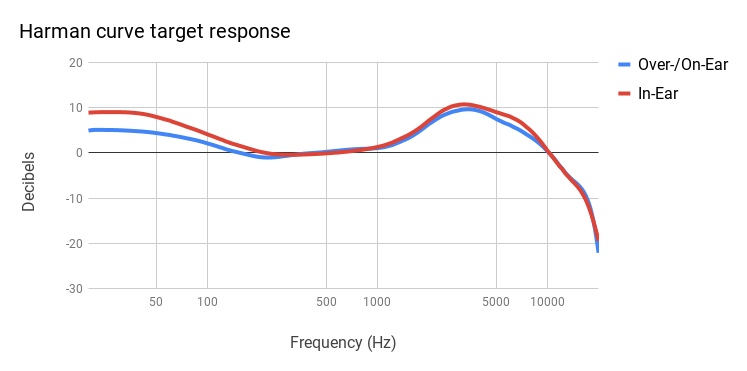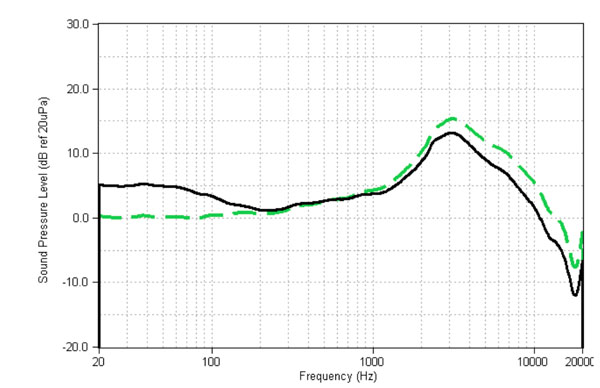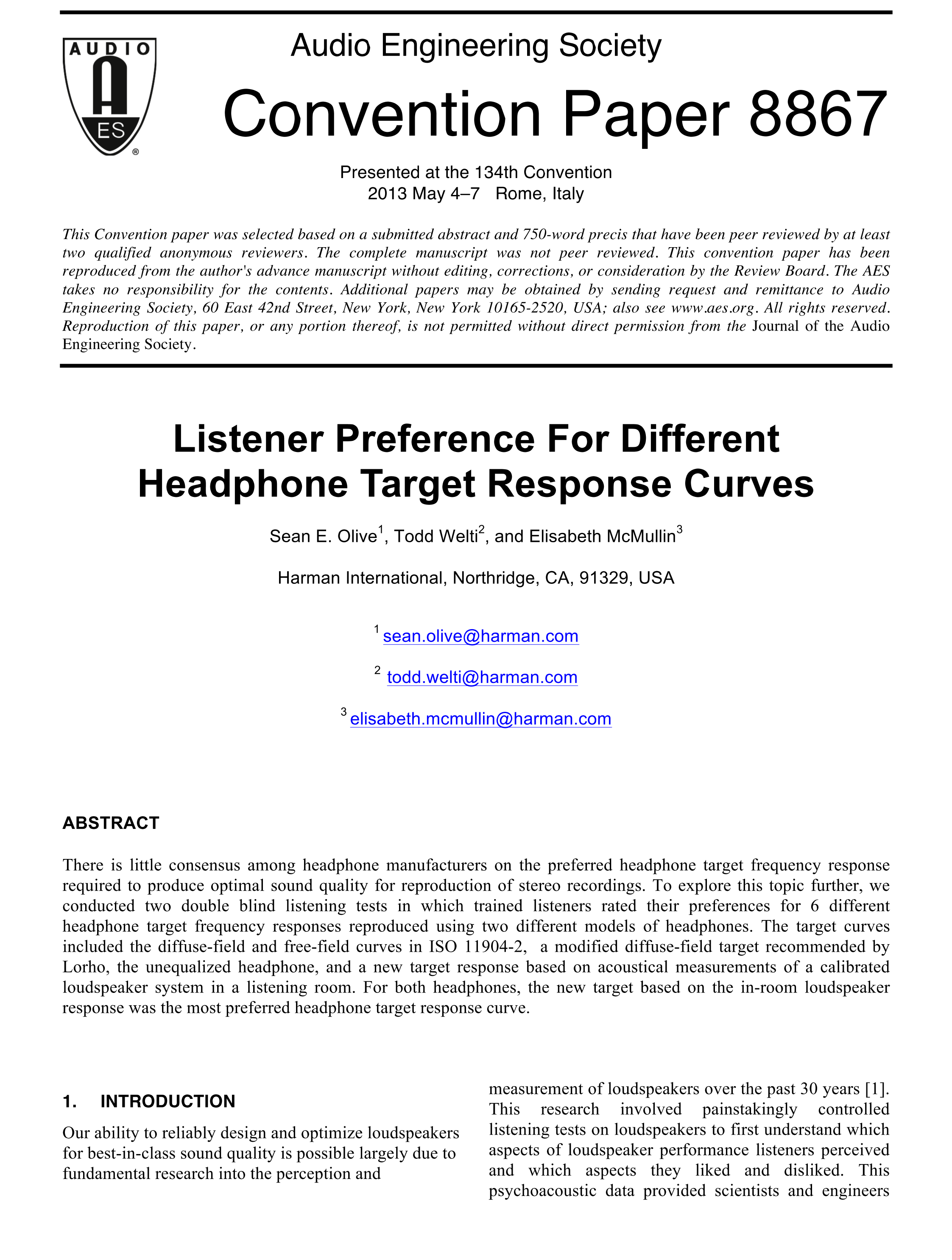castleofargh
Sound Science Forum Moderator
- Joined
- Jul 2, 2011
- Posts
- 11,036
- Likes
- 6,925
I believe the very first FR that Harman gave to listeners was what you describe, while following their first assumption; That if we present the FR preferred on speakers at the eardrum, it would also be preferred on headphones.I'm enjoyin all the hi-fi talk.
To go back to some of the OP's original questions though... In case it wasn't apparent from some of my previous posts, I do also think that a neutral response should include some type of a bass boost. Because I subscribe to the "room sound" theory. When you put speakers that measure flat in an echo-free chamber into a room with some reflectivity, they acquire a darker tilt. Because they do not (usually) have the same amount of dispersion or directivity at all frequencies. This is what Floyd Toole talks about in the video I posted earlier.
The shelving question is a bit harder to answer. Speakers are imperfect instruments though. And eventually start to falloff at some point in the lower frequencies. And if you are using that as your model for the sound of a headphone, then it may make some sense to either level or roll off the sub-bass. At least a bit, to better approximate that. Exactly where and how much is sort of up for grabs though.
It would not be that hard for the manufacturers of the head and torso rigs which are used to measure headphones to include a compensation curve for room effects like this. They could very easily set up a pair of flat speakers in an average sized room, with average reflectance. And measure what the in-ear response is on their rig from a typical listening position. Or averaged over several positions.
Doing the measurements for a free field and diffuse field are actually alot harder, because those require either an echo-free chamber. Or a totally reflective room. Neither of which is especially easy to create. A room that replicates the average size and reflectance of a typical listening space in a home would probably be a trivial task to setup by comparison. So I don't know why it has not been done before.
If they wanted to, they could even do this for a variety of different spaces, and speaker configurations. So you could take your pick and choose the one you like the best. That sort of information would probably also add some add'l value to their products.
But rapidly they got a trend in how listeners were EQing it in the general direction of a warmer FR.
My educated guess as to why that approach doesn't work is this:
-the matter of missing tactile bass.
-the various issues coming from the massive differences in presentation between stereo album on speakers and stereo on headphones(without crossfeed, reverb, or our own HRTF cue).
Basically, same FR alone does not give us the same experience or even same sound in this context.

















 But not everyone agrees with it. This is from Dr. Olive's twitter...
But not everyone agrees with it. This is from Dr. Olive's twitter...



